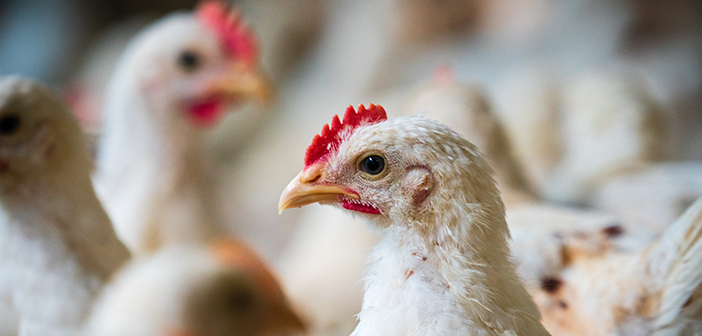Scientists have used gene editing techniques to identify and change parts of chicken DNA that could limit the spread of the bird flu virus in the animals.
Researchers were able to restrict – but not completely block – the virus from infecting chickens by altering a small section of their DNA.
The birds showed no signs that the change in their DNA had any impact on their health or wellbeing.
The findings are an encouraging step forward, but experts highlight that further gene edits would be needed to produce a chicken population which cannot be infected by bird flu – one of the world’s most costly animal diseases.
Scientists from University of Edinburgh, Imperial College London and the Pirbright Institute bred the chickens using gene editing techniques to alter the section of DNA responsible for producing the protein ANP32A. During an infection, flu viruses hijack this molecule to help replicate themselves.
When the ANP32A gene-edited chickens were exposed to a normal dose of the H9N2-UDL strain of avian influenza virus – commonly known as bird flu – nine out of 10 birds remained uninfected and there was no spread to other chickens.
The research team then exposed the gene-edited birds to an artificially high dose of avian influenza virus to further test their resilience.
When exposed to the high dose, half of the group – 5 out of 10 birds – became infected. However, the gene edit did provide some protection, with the amount of virus in the infected gene-edited chickens much lower than the level typically seen during infection in non-gene-edited chickens.
The gene edit also helped to limit onward spread of the virus to just one of four non-gene-edited chickens placed in the same incubator. There was no transmission to gene-edited birds.
Scientists found that in the ANP32A gene-edited birds, the virus had adapted to enlist the support of two related proteins – ANP32B and ANP32E – to replicate.
Following lab tests, scientists found that some of the mutations enabled the virus to utilise the human version of ANP32, but its replication remained low in cell cultures from the human airway.
Experts say that additional genetic changes would be needed for the virus to infect and spread effectively in humans.
However, the findings demonstrate that the single ANP32A gene edit is not robust enough for application in the production of chickens, according to the team.
To prevent the emergence of escape viruses – viruses that adapt to evade the gene edit and cause infection – the research team next targeted additional sections of DNA responsible for producing all three proteins – ANP32A, ANP32B and ANP32E – inside lab-grown chicken cells.
In cell cultures in the lab, growth of the virus was successfully blocked in cells with the three gene edits.
The next step will be to try to develop chickens with edits to all three genes. No birds have been produced yet.


